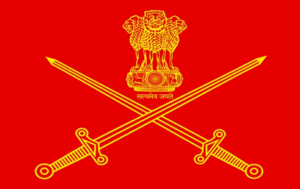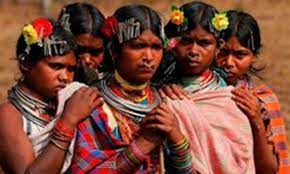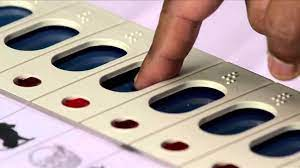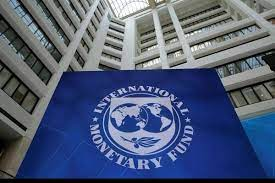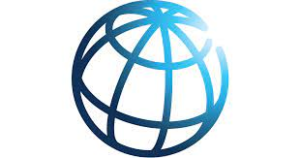Daily News Analysis- 16/10/2023
Army Commanders Conference deliberates on the emerging security scenario
News: Today marked the start of the Army Commanders’ Conference in New Delhi.
- The biennial event, held at the highest level, serves as a platform for conceptual discussions and helps the Indian Army make crucial policy decisions.
- Army Commanders and other key functionaries are virtually convening for the first day of the five-day conference. The remainder of the discussions will take place in person.
- With its wide reach, the Commanders’ Conference guarantees that the Indian Army will always be modern, visionary, flexible, and prepared for the future.
- On Wednesday, Raksha Mantri Rajnath Singh is expected to be present at the summit. General Anil Chauhan, Chief of Defence Staff, General Manoj Pande, Chief of Army Staff, and VR Chaudhari, Chief of Air Staff, will also speak to the group.
- Dr. Ajay Kumar Sood, the government’s principal scientific adviser, will also present a session titled “Leveraging Technology for National Security.”
Particularly Vulnerable Tribal Groups
News: Tribal societies can be recognized by a number of telltale indicators, including primitive characteristics, a unique culture, remoteness from other communities, shyness when interacting with them, and backwardness. In addition to this, certain tribal communities have unique characteristics such as a pre-agricultural level of technology, a reliance on hunting and gathering food, negative or zero population growth, and a very low literacy rate. These are referred to as Tribal Groups That Are Particularly Vulnerable.
The necessity of being recognized
- Among the tribal tribes, PVTGs are particularly at risk. PVTGs require additional funding for their growth since more established and forceful tribal groups tend to receive a larger share of tribal development monies as a result of this factor.
- In this regard, the Indian government began identifying the most vulnerable tribal groups in 1975 and designated 52 of them as PVTGs.
- Another 23 groups were added to the category in 1993, bringing the total number of PVTGs out of 705 Scheduled Tribes in the nation (2011 census) to 75.
The Indian government uses the following standards to identify PVTGs.
- Pre-agricultural technology level.
- Low reading proficiency.
- Economic regression.
- A population that is stationary or diminishing.
- As a result, 75 PTVGs have been found throughout the nation.
Electronic Voting Machines (EVMs)
News: Electronic voting machines, or EVMs, provide voters with a button for each candidate they choose to select. It is connected to an electronic voting box through a cable.
- The control unit and the balloting unit are its two constituent units. There is a 5-meter cable between them.
- A single 6-volt alkaline battery that is mounted in the control unit powers the EVM.
- It’s even functional in places without electricity.
- The polling officer chosen by the Election Commission is home to the control unit.
- The voting area contains the Balloting Unit, where voters can cast their secret ballots by pushing a button next to the name and signature of the candidate of their choosing.
VVPAT
- Electronic voting machines are connected to VVPAT, an independent verification printer machine.
- Voters are able to confirm whether their vote was cast for the chosen candidate.
- A paper slip is printed through the VVPAT when a voter pushes a button on the EVM. The name of the candidate and the poll symbol are on the slip.
- The voter can use it to confirm their selection.
- The ballot slip will be cut and placed into the dropbox in the VVPAT system, causing a beep to sound after it has been visible to the voter through a glass case for seven seconds.
- Only poll workers have access to VVPAT machines.
International Monetary Fund
News: The International Monetary Fund (IMF) is a global financial institution established in 1944 to promote international monetary cooperation, exchange rate stability, balanced growth of international trade, and the alleviation of poverty around the world.
- India has been an active member of the IMF since its inception and has played a significant role in the organization’s initiatives.
- India has been a beneficiary of IMF support through various financial arrangements, especially during times of economic crisis. Additionally, India has consistently contributed to the IMF’s resources and governance reforms, advocating for increased representation for emerging economies.
- As one of the world’s fastest-growing major economies, India’s role within the IMF is crucial. Its input influences policy decisions, particularly those impacting the global economy, exchange rates, and financial stability.
- India’s participation reflects its commitment to a rules-based international monetary system and its dedication to global economic development and stability, reinforcing the nation’s significance on the world stage.
World Bank
News: The World Bank is a prominent international financial institution that offers financial and technical assistance to developing countries for projects and programs aimed at reducing poverty, promoting economic growth, and fostering sustainable development. India has had a long and significant relationship with the World Bank.
- India is one of the largest borrowers from the World Bank, receiving extensive financial and technical support for a wide range of projects, including infrastructure development, education, healthcare, and poverty alleviation.
- This partnership has played a vital role in India’s economic transformation, as it has facilitated the country’s infrastructure expansion and social development.
- India has also actively engaged in the governance of the World Bank, advocating for reforms to ensure better representation of emerging economies.
- Its status as a significant shareholder in the institution underscores its commitment to fostering international development and its willingness to be a key player in global efforts to address economic and social challenges in the developing world.

